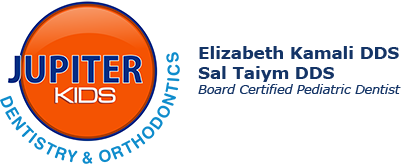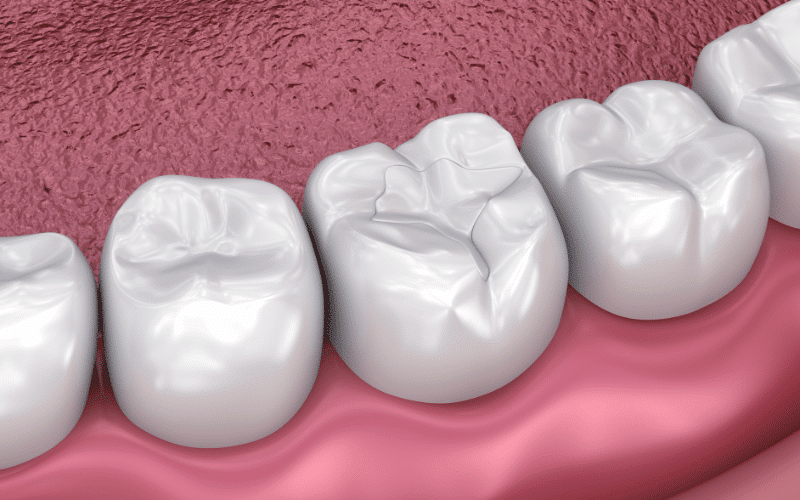As a parent, your child’s health and well-being are your top priorities. This includes their oral health, which plays a crucial role in their overall development and well-being. While consistent brushing and flossing are essential for good dental hygiene, some areas of the mouth can be challenging to clean, especially for young children. This is where dental sealants come in, offering a powerful shield against cavities and protecting their precious smiles. In this informative blog, we’ll discuss the importance of dental sealants in Allen, TX. Also, the blog will explore the role that dental sealants play in preventing cavities among children.
What are Dental Sealants?
Dental sealants in Allen, TX, are thin, protective coatings applied to the chewing surfaces of your child’s back teeth (premolars and molars). These teeth have deep grooves and pits that act like little traps, catching food particles, plaque, and bacteria that can contribute to tooth decay. Brushing and flossing might not always reach these intricate crevices, leaving them vulnerable to cavities.
How Do Dental Sealants Work?
Think of sealants as tiny superheroes for your child’s teeth. The dentist cleans and dries the tooth surface before applying a liquid resin that flows into the grooves and pits. This liquid then hardens, forming a smooth, protective barrier that:
- Blocks out food particles and plaque: By sealing the grooves and pits, dental sealants prevent food and bacteria from accumulating in those hard-to-reach areas.
- Reduces the risk of tooth decay: By preventing the buildup of plaque and bacteria, they significantly reduce the risk of cavities developing in the protected areas.
The Benefits of Sealants for Children
Dental sealants offer numerous benefits for children, making them a crucial part of a comprehensive preventive dental care routine. Here are some key advantages:
- Reduced risk of cavities: Studies show that dental sealants can effectively prevent up to 80% of cavities in children’s back teeth for several years.
- Early cavity prevention: Applying sealants early, soon after the permanent molars erupt (around age 6), provides the most significant protection against cavities.
- Pain-free and quick procedure: Applying dental sealants is a painless and quick procedure, typically taking only a few minutes per tooth.
- Cost-effective: Dental sealants are a cost-effective way to prevent cavities, potentially saving you money on future dental treatments.
- Improved oral health: By preventing cavities, dental sealants promote better oral health. As a result, it contributes to your child’s overall well-being.
How Do Dental Sealants Prevent Cavities in Children?
1. Sealing The Vulnerable Areas
Dental sealants are thin, protective coatings typically made of plastic resin. They are applied to the chewing surfaces of the back teeth (molars and premolars) by a dentist. These teeth have deep grooves and pits that are difficult to clean thoroughly with brushing and flossing alone, making them prime targets for cavity formation.
2. Creating A Physical Barrier
Once applied, the sealant hardens, forming a smooth, protective layer over the grooves and pits. This barrier:
- Blocks food particles and plaque buildup: By preventing food and bacteria from getting lodged in the grooves, sealants significantly reduce the risk of cavities developing in these vulnerable areas.
- Minimizes acid exposure: Plaque bacteria feed on sugars in food, producing acid as a byproduct. This acid attacks tooth enamel, leading to cavities. Dental sealants in Allen, TX, minimize the contact between the enamel and the acids, protecting the teeth from decay.
3. Long-lasting protection
While not permanent, dental sealants can offer effective protection for several years, typically 2-4 years. Regular dental checkups allow dentists to assess the condition of the sealants and reapply them if necessary.
Are Dental Sealants Right for Your Child?
Dental sealants offer a powerful shield against cavities, especially for children. But, like any dental procedure, understanding their situation is crucial. This guide delves deeper into the factors influencing your dentist’s recommendation for your child:
1. Oral Health History
If your child already has cavities, sealants can help prevent further decay in surrounding areas. However, they won’t repair existing damage, so addressing current cavities with fillings might be necessary before applying sealants. On the other hand, if your child has any dental restorations, your dentist will assess their suitability for sealants based on the location and type of existing work.
2. Risk Factors for Cavities
A diet high in sugary foods and drinks increases the risk of cavities. Sealants can offer a crucial protective barrier in such cases by limiting the contact of these acids with the tooth surface. Even the most diligent brushing might miss some areas, particularly the deep grooves of molars. Sealants fill these gaps, making it harder for food particles and plaque to accumulate. As a result, it reduces the risk of decay even if brushing isn’t perfect.
3. Tooth Development and Condition
The ideal time to apply sealants is soon after permanent molars erupt, typically around age 6 and 12. Early application maximizes protection during the cavity-prone years (ages 6-14). Some children have deeper grooves or pits in their molars, making them more prone to trapping food particles and plaque. Sealants are particularly beneficial for such teeth, effectively smoothing out these crevices and preventing decay.
Caring for Dental Sealants
Here’s what you need to know to ensure your child’s sealants stay strong and keep cavities at bay:
1. The Power of Regular Checkups
Think of your dentist as your child’s dental detective. During regular checkups and cleanings, they’ll become familiar with the state of the sealants. They can use special tools to examine the sealant’s integrity, looking for chips, cracks, or wear and tear.
If the dentist identifies any issues with the sealant, they can intervene quickly and reapply it before a cavity has a chance to develop. This saves both time and potential discomfort for your child.
2. Brushing and Flossing Remain Crucial
Sealants are a shield, not a force field. They protect the sealed surfaces, but the unsealed areas of the teeth are still vulnerable to plaque and bacteria buildup. Maintain a consistent brushing and flossing routine. Twice-daily brushing with fluoride toothpaste and daily flossing is still essential to remove plaque and bacteria.
Dental sealants are a valuable tool in your child’s oral health care arsenal. These protective shields empower you to prevent cavities proactively. Also, it promotes healthy smiles and sets the stage for good oral health throughout their lives. By scheduling regular dental checkups and discussing dental sealants with your dentist, you can give your child the gift of a healthy smile that lasts a lifetime. Remember, prevention is key, and dental sealants in Allen, TX, can play a significant role in safeguarding your child’s oral health, allowing their smiles to shine brightly.


